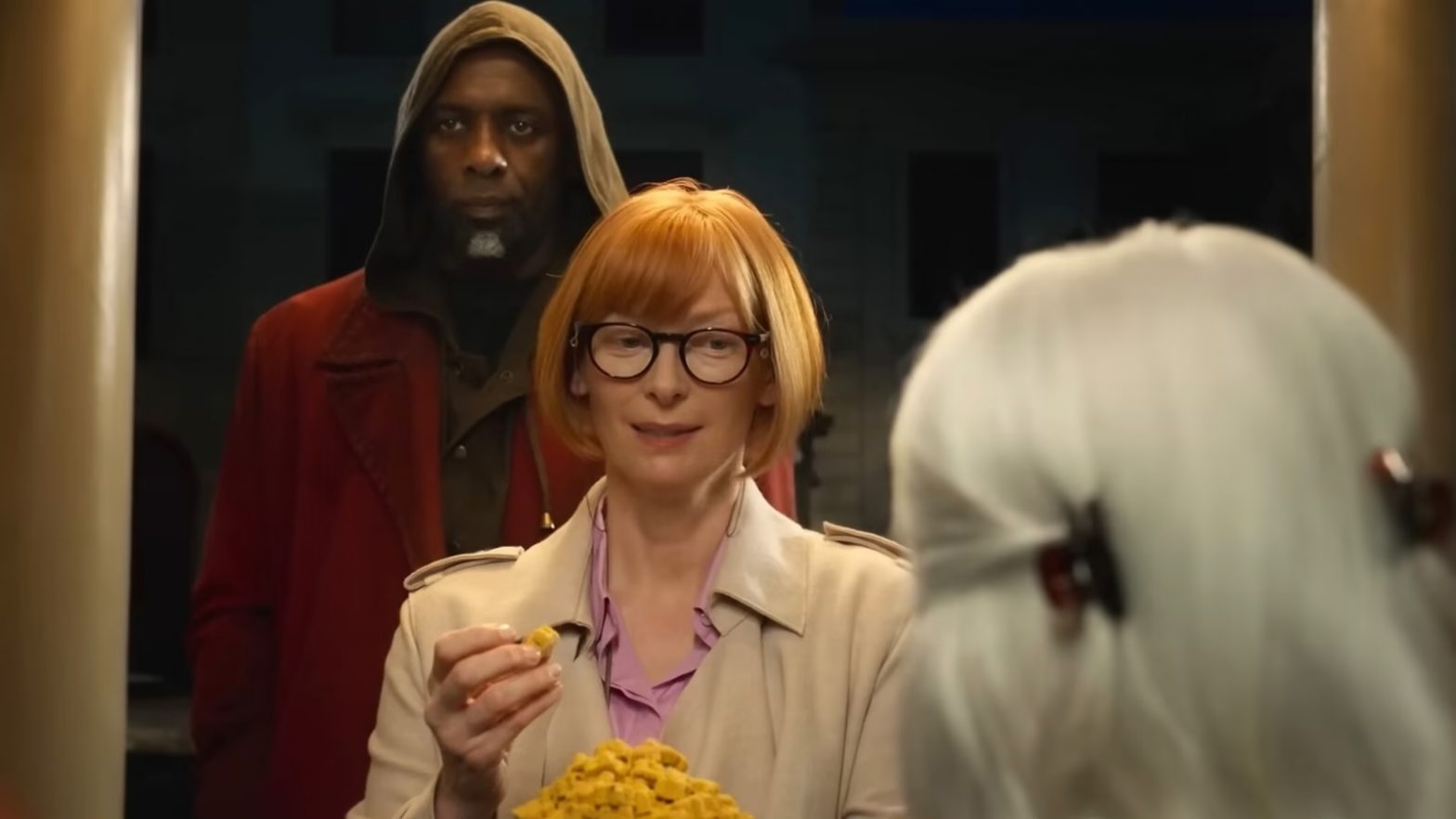Having masterminded the Mad Max franchise, Australian director George Miller could have spent his entire career making billions filming high-octane chases around a post-apocalyptic wasteland. Instead, he consistently chooses unusual, disparate projects, ranging from The Witches of Eastwick to the animated Happy Feet. His latest, Three Thousand Years of Longing, again proves he’s anything but one note.
Adapted from A. S. Byatt’s The Djinn in the Nightingale’s Eye, Miller’s latest stars Tilda Swinton as Alithea Binnie, a repressed narratologist visiting Istanbul for a conference. She fatefully acquires a glass bottle containing a Djinn (Idris Elba), who she releases. Imprisoned in the bottle for around three millennia, the Djinn must now grant her the traditional three wishes, but Alithea, a specialist in stories, is acutely aware of how such wishes can backfire.
Desperate for his freedom, the Djinn attempts to convince her of his basic goodness by elaborately detailing various incarcerations and escapes, weaving major historical figures into his recollections.
In these tall tales, Three Thousand Years elegantly captures the feel of myths—not kids’ fairy tales, but mature myths loaded with murder and lust. When a director describes an adult-themed movie as a “fairy tale,” it’s likely to be half-baked magical realism, ridden with plot holes. Three Thousand Years, however, is a love letter to storytelling.
The Djinn’s yarns are genuinely mythical in scope, where each marvelous detail grows more extravagant. Miller uses this outsized material to comment on how, as human technology advances, our true sense of magic erodes. He echoes cinematic Arabian Nights classics like Alexander Korda’s The Thief of Bagdad without becoming derivative, and undercuts traditional notions of Djinns’ trickery.
Miller creates an atmosphere of wistfulness, laced with wry humor. Three Thousand Years marks a major shift away from the relentless pace of Mad Max: Fury Road. It moves leisurely without being slow, more like the original Mad Max, where quieter stretches let the audience get to know and like the characters before things get frantic.
Swinton and Elba give vulnerable, appealing, low-key performances that ground the film in believability and compassion. Every creative department delivers beautifully: the cinematography, costumes, and production design are all first-rate. It’s a visually sumptuous production where every penny spent on its intricate, rococo sets and opulent costumes is vibrantly apparent on screen. CG effects are used effectively, most notably in a standout sequence where Alithea discusses a childhood imaginary friend.
When a movie accomplishes as much as Three Thousand Years does, it’s hard to criticize it. The film’s well-written dialogue and inventiveness make it easy to forget how simple—and, at times, thin—its plot really is. It could be improved by raising the emotional stakes and tightening the story up overall. At its best, Three Thousand Years is a reminder of the far-flung, impossible places that movies can transport viewers to. With so many militantly dreary films in current circulation, the exoticism, romance, and humanity of Three Thousand Years combines for a magic carpet ride worth taking.
